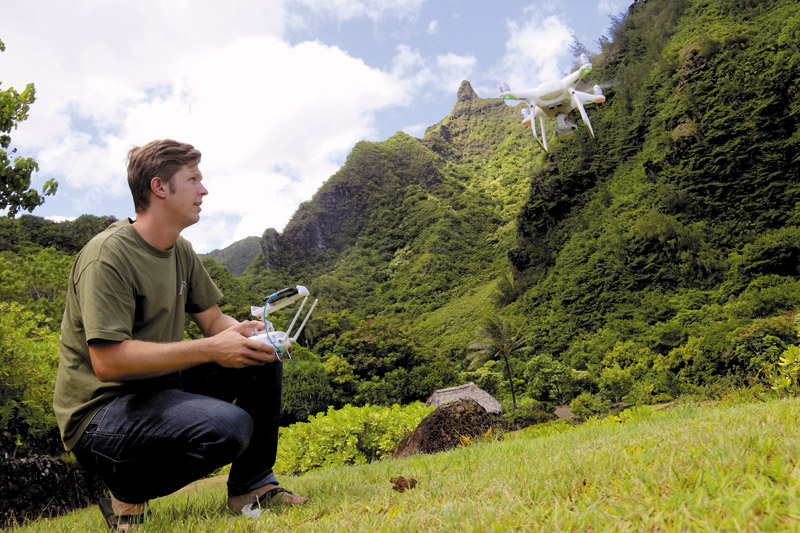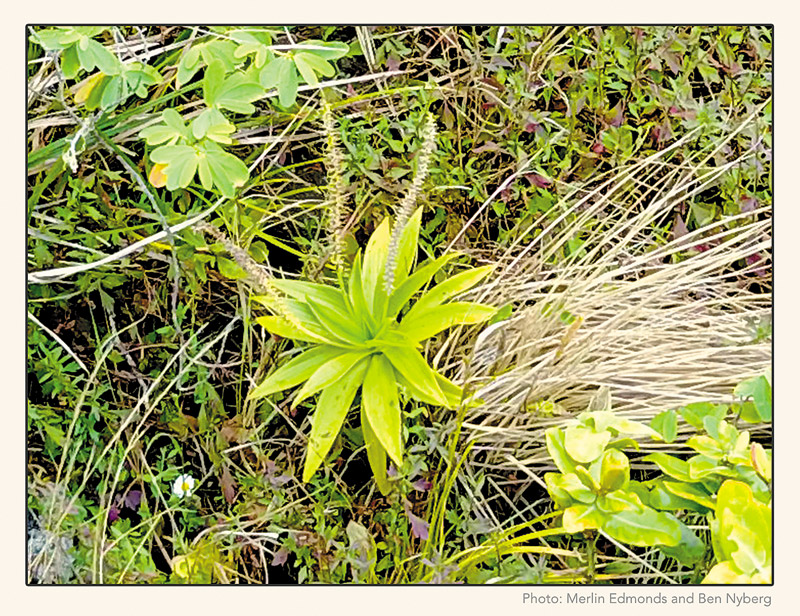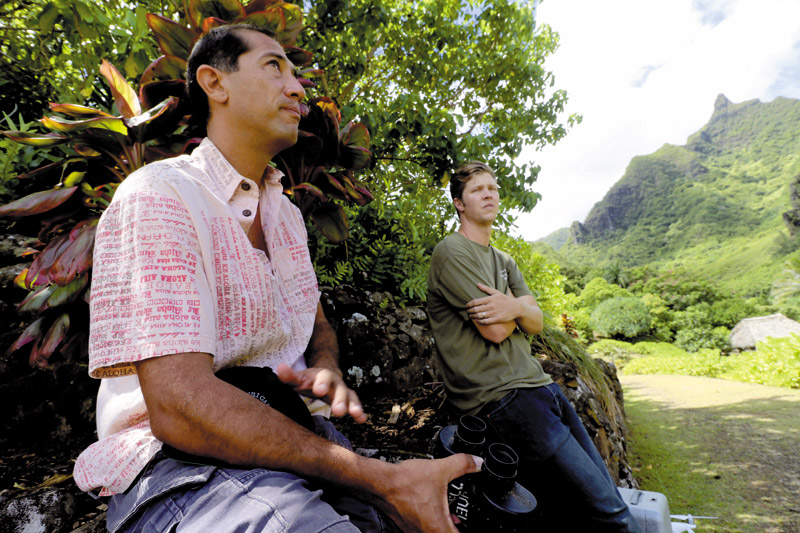High-Flying Conservation

Ben Nyberg, National Tropical Botanical Garden’s geographic information system coordinator, came up with the idea of fl ying a drone into remote, inaccessible regions to help discover endangered plant species on Kaua‘i.
Rare plant species clinging to life atop Kaua‘i’s remote mountain locales once were only discoverable by scientists who endured dangerous cliff-dangling feats. Drone technology, however, has dramatically changed the game, making these hard-to-reach locations easily accessible with just a few minutes of remote-controlled maneuvering.
National Tropical Botanical Garden now uses cutting-edge technology, thanks to the insight of Ben Nyberg, NTBG’s geographic information system coordinator, to find, and ultimately perpetuate, threatened and endangered plant species without having to put the lives of their scientists at risk. With the help of Merlin Edmonds, an experienced NTBG botanist, Nyberg was recently able to identify several species on the brink of extinction along the peak of Limahuli Garden and Preserve’s Mauna Pūlo‘u — simply by flying a drone to the area and capturing video footage.
One of the rarest plants in the world, the native laukahi (Plantago princeps var. anomala) — which happened to be in full flower at the time, making positive identification easy — was among the species discovered.

A close look at the rare laukahi plant, which was fi lmed by NTBG scientists on Mauna Pulo‘u at Limahuli Garden and Preserve. PHOTO COURTESY NATIONAL TROPICAL BOTANICAL GARDEN
“Just teetering on the edge of existence,” says Kawika Winter, director of Limahuli Garden and Preserve. The species, he adds, is also part of Hawai‘i’s Plant Extinction Prevention Program, which exists to protect imperiled flora.
Estimated to have roughly 25 individuals left in the wild, the population of this endemic laukahi has approximately doubled in size due to preservation efforts. Most importantly, this scientific breakthrough provides more understanding of the species, once thought to only exist and thrive in montane regions like the rim of Kalalau Valley. The fact that the plant is growing on newly discovered terrain, unlike any others accessed before, demonstrates that the species is capable of living at lower elevations — something that’s especially helpful as the island’s climate
shifts to warmer temperatures and drier conditions. In other words, they’ll have a better chance of surviving than plants selected from climates that are becoming fewer and farther between.
“Because it’s nuts up there, it’s windy, there’s a lot of sun, and barely any rain or fog; it’s not a montane cloud forest,” says Winter about the peak of Mauna Pūlo‘u. “We need to get plants (like this) selected for harsh conditions and put them all over the place so that when climate change gets worse, they are hearty.”

Limahuli Garden and Preserve director Kawika Winter (left) serves as a bird spotter for Ben Nyberg. Nyberg operates a drone that has the ability to reach the peak of Limahuli’s Mauna Pulo‘u, seen in the background, and capture video of endangered plant species.
Moreover, the new information allows scientists to ensure that protection is prioritized against aggressive competitive species in these areas.
“And mitigate the threats even more than they have been already,” adds Nyberg.
Since acquiring his position at NTBG about three years ago, Nyberg took decades of NTBG’s scientific mapping of endangered species and created a predictive model of where rare plants were theorized to be located. When his map was applied to Limahuli, a 1,000-acre nature preserve, the entire cliff face of Mauna Pūlo‘u turned up as a hot spot thought to harbor native species. Rather than setting up a major expedition that would put lives at risk, it only took one drone all of about 20-30 minutes to prove his theory accurate.
Nyberg and Winter are anxious to investigate other areas in the biodiverse nature preserve where they may even find species once believed to be extinct. But for the past several months, they’ve had to put the project on hold until mating season of the koa‘e kea (white-tailed tropicbird) concludes in October.
“Within five minutes, no matter where the drone is, the birds will come in and investigate,” says Winter, who serves as a bird spotter for Nyberg as an extra measure of precaution, adding that this is one of the many reasons why other drone operators shouldn’t fly without permits.
Once they get back in the air, Winter, a self-professed plant nerd, is optimistic that new discoveries will mean a continued increase in biodiversity that coincides with an increase in cultural diversity.
“The more biodiversity we can maintain, the more we can maintain that diversity of humanity that makes us so special,” says Winter, who has a Ph.D. in botany with a focus on biocultural conservation from the University of Hawai‘i at Mānoa. “When you take away the diversity of language, culture and traditions, everything collapses.”
Native plants not only served as food and medicine for Hawaiians, they were also, and continue to be, a vehicle for maintaining stories at the core of cultural identity, such as kalo (taro), which represents the “staff of life.”
“Plants enrich humanity,” says Winter, who was a student of the late Levon ‘Ohai, a seventh-generation healer. “And that’s what we do here at Limahuli, we demonstrate how the plants of the landscape were at the foundation of Hawaiian culture and society, and how enriched our communities were because of these really intimate relationships with the plants.”
If the plants disappear, so do the stories that impart important lessons, like how to be a model citizen and how to relate to nature.
“When you raise kids with those stories, then they start to see the solid foundation that you build families and communities on,” he says. “When you start to lose them, that’s another story and another foundation we lose.”
Losing laukahi, which Winter learned from ‘Ohai is one of the “magnificent seven of Hawaiian medicine,” would be one more thread that continues to unravel society’s interconnectedness.
“The plants are a huge foundation for our connection to nature and they truly do enrich our lives,” says Winter.
Visit ntbg.org for more information.




